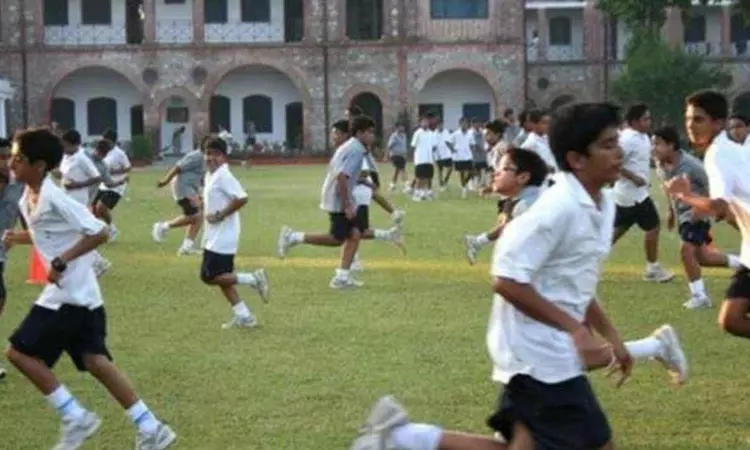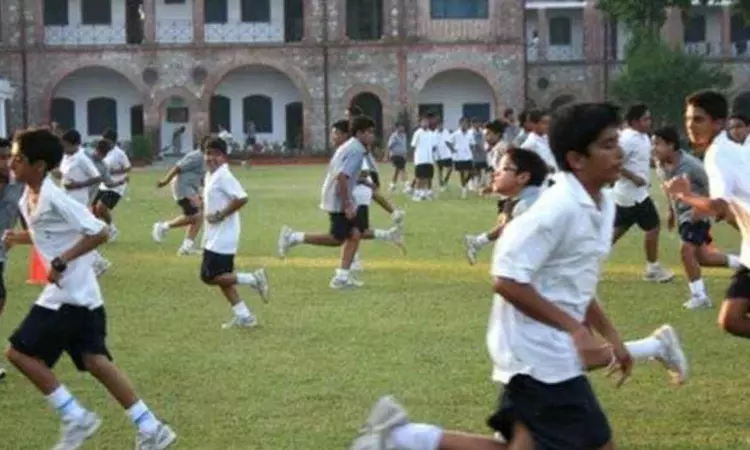Majority school students across globe do not have access to minimum physical education: UN report
 X
XRepresentative Image
NEW DELHI: The majority of the world's schoolchildren still do not have access to the minimum required physical education, according to the first-ever Global Status Report on Quality Physical Education.
The report, "Global State of Play", published by UNESCO's education team, revealed that only 58 per cent of the countries have made physical education compulsory for girls and that only 7 per cent of schools worldwide have established equal physical education time for boys and girls.
Two-thirds of secondary school students and more than half of primary school students worldwide are not taught the required minimum weekly physical education.
An expert from the team told PTI that less than one in two primary school teachers has received specialist training in physical education. The team also flagged major differences in funding for physical education between countries — two-thirds devote less than 2 per cent of their education budget to it while one country in 10 allocates more than 7 per cent.
"Physical Education (PE) has been a subject of extensive discussion among health and education professionals worldwide due to its potential to support learning and contribute to the holistic development of students. Opportunities for professional development are scarce due to budgetary constraints and/or insufficient time allocated in teacher schedules to attend training.
"For instance, only 33 per cent of countries reported providing in-service training (INSET) and continuous professional development (CPD) to their PE workforce every five years, which significantly deviates from the recommended annual frequency," the report said.
Regarding the inclusion of girls and students with disabilities in physical education, 58 per cent of the countries worldwide report their participation in mainstream settings, yet significant disparities still exist between regions.
"A concerning issue is the discrepancy between policy and practice. For instance, while 54.5 per cent of countries report policies, strategies, guidelines or plans to provide equal amounts of PE time for boys and girls, in practice, only 7.1 per cent of schools report that equal PE time is actually implemented for boys and girls," the report said.
"This equates to a 47.4 per cent difference between policy and practice, a result that is observable across all regions. Similarly, one in three students with disabilities still has no access to PE," it said.
UNESCO developed the concept of Quality Physical Education (QPE) to distinguish it from traditional PE and highlight the importance of core factors such as frequency, variety, inclusivity and value content.
"There is a need for subjects like physical education to consider future orientations and curriculum developments to ensure continued relevance and effectiveness in relation to meeting student needs and learning outcomes," the report said.
"A teacher's delivery of a PE curriculum is a central aspect to be considered to ensure practice is meaningful, inclusive and meets the needs of a diverse range of learners. This clearly relies on a well-educated workforce with access to continuous professional development opportunities," it added.
UNESCO has called upon countries to work towards increasing investment in this area.
Improving the training of sports teachers and educators, increasing investment in infrastructure, developing physical education programmes that are resolutely inclusive, particularly for girls and young people with disabilities, increasing the number of hours of physical education in school curricula and placing the values of sport at the heart of educational programmes are among the recommendations made by the team for countries.
The report provides 10 indicators, including giving a good, moderate or poor score, to help local and national authorities assess the quality of physical education in their country and identify priority areas for improvement.

